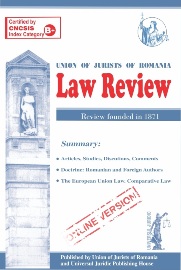Ne Bis In Idem: Towards a Transnational Constitutional Principle in the EU?
Abstract
Many areas of regulation and enforcement have been substantially affected by the increasing European
integration process in the last few decades. The result is not only visible through the implementation,
application and enforcement of EU policies in every Member State (the vertical dimension of integration),
but also in the creation of common areas such as the customs union, the internal market and the area of
freedom, security and justice (the horizontal dimension of integration). Thanks to the four freedoms of
the internal market citizens can enjoy a whole set of basic economic and non-economic freedoms. Thanks
to the Lisbon Treaty citizens can expect that the Union will offer them free movement, in conjunction
with appropriate measures to prevent and combat crime (Article 3(2) TEU) and to offer security in a
common area of freedom, security and justice. Both the vertical and horizontal dimension of European
integration are part of a EU legal order (with European and national components) in which the rule of
law and human rights standards do apply. The Lisbon Treaty has strengthened this in Article 6 TEU by
recognizing the EU Charter of Fundamental Rights (CFREU) as a source of binding primary EU law.





